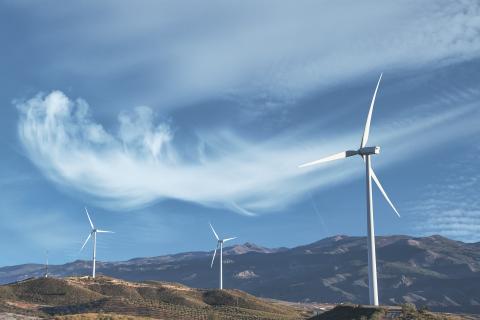Reactions to the announcement of the creation of a "green energy corridor" linking the Iberian Peninsula to Europe
On Thursday, president Pedro Sánchez announced an agreement with France and Portugal to create the "green energy corridor", which will connect Spain, Portugal and France to the European Union's energy network. According to the government, the corridor envisages the creation of a maritime gas pipeline connecting Barcelona with Marseille, which will be used to transport natural gas, hydrogen and other gases.

Marcial González - corredor verde EN
Marcial González de Armas
Electrical engineer in the sector
What only a few months ago was considered a meaningless project and discarded due to lack of consensus, has now become a reality. Many will think that this has been due to a substantial change in the project, but nothing could be further from the truth. It has simply been a change of name and image that has led to the flourishing of an agreement between Spain-France and Europe to build a gas bridge between the peninsula and the rest of Europe.
A project that was originally envisaged as a gas pipeline through which hydrogen would circulate in the future, is now a hydroproduct (a hydrogen pipeline) through which gas will circulate in its first years of life. This pipeline has been approved as a matter of urgency to solve the gas crisis in Europe. It is a pity that its construction is expected to be completed in 5 years, when the European energy panorama will be very different.
Moreover, the project is not accompanied by strong plans to integrate hydrogen into the European energy landscape. For now, it is just an anecdote that we have not yet seen implemented on a large scale, which leads me even more to believe that it will take longer than we think to see green hydrogen circulating in this hydrogen product.
The reality is clear: Europe needs gas and has seen the need to paint as green a project that a few months ago was pushed aside for not being in line with the EU's ecological transition objectives.
To finish by highlighting the positive, this designation means that hydrogen technology must be promoted and the pipeline must be built in such a way that it is ready to transport hydrogen from the outset. Furthermore, increasing the energy interconnection of the Iberian peninsula with the rest of Europe is a step that benefits us all. Too bad that this is at the cost of investing in infrastructures that, at least in the short and medium term future, will serve to continue consuming fossil fuels.
José Ignacio Linares - corredor verde EN
José Ignacio Linares Hurtado
Professor in the Department of Mechanical Engineering and Director of the Repsol Foundation Chair in Energy Transition at Comillas Pontifical University
The agreement is twofold: one on gas and the other on electricity. The new aspect as such is the electricity side, whereby France undertakes to increase electricity interconnections, something that should have been done years ago. On the gas side, this is not new, as the European Hydrogen Backbone initiative, which consists of an EU-wide hydrogen transport infrastructure, has been in place for some time.
On the hydrogen side, it is envisaged that of the 53,000 km network (2040), 60% will come from the re-use of the existing gas system and the rest from new infrastructure. The average cost, including compression equipment (which must be new) is estimated at around 100 billion euros, and will involve transport costs of between 0.15 and 0.22 €/kg per 1000 km. The MidCat was already listed on the initiative's website as new infrastructure, as well as new submarine hydro-products (e.g. one between Barcelona and northern Italy). Therefore, the agreement has meant changing MidCat to BarMar, but it is still an infrastructure that was already planned. What the agreement has allowed, apparently, is to overcome French environmental reluctance to cross the Pyrenees.
It is, therefore, an infrastructure for the future, to transport green hydrogen, already planned at European level, which has been adapted to solve an environmental constraint. It can be used temporarily to transport natural gas, but the timeframe is not adequate for it to solve, even partially, the current problem.



